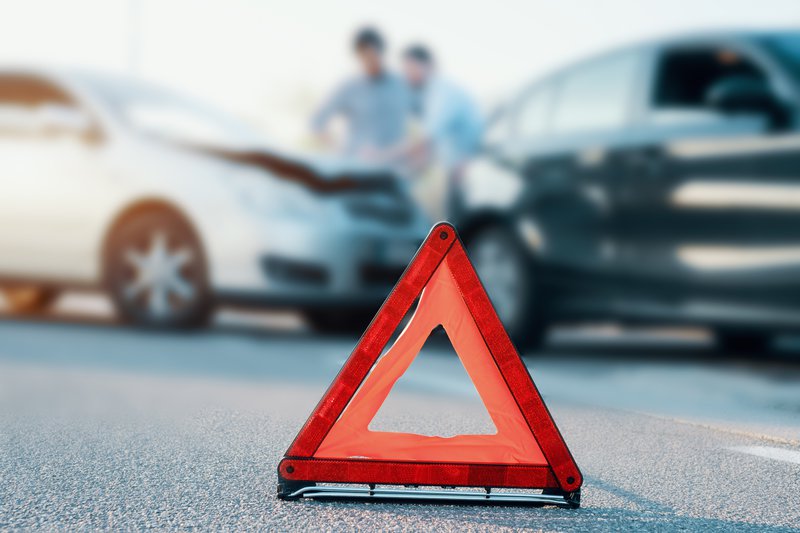How safe is your child strapped into a car seat in the back?
Updated | By Wendy Knowler
If
you don’t know your ESC from your ABS, you could be part of the reason why most of the non-premium cars sold in South Africa don’t have some basic,
lifesaving safety features which have been legally compulsory for about
six years.

Listen to the podcast or read the details below:
Given that consumer awareness of and demand for vehicle safety features has been the driving force behind the upping of safety standards in many countries, should we be surprised that of the 12 South African cars which the Global New Car Assessment Programme (NCAP) has crash tested in a facility outside Munich in three batches since 2017, only one - the Toyota Yaris - has electronic stability control (ESC) as a standard feature?
ESC is anti-skid technology which is credited with saving as many lives as the seatbelt by preventing cars from skidding or enabling them to recover from skids.
By the way, Global NCAP takes a very dim view of manufacturers offering a lifesaving feature as an optional extra - they don’t count cars which don’t have ESC in the base model. If it’s only in the top-of-the-range model or you have to pay for it as an “optional extra”, they don’t take the feature into consideration in a car’s safety rating.
The big news out of the last round of local car crash tests which Global NCAP did in conjunction with our Automobile Association was that the Nissan NP300 bakkie, the so-called Hardbody, was found to be not so tough after all, scoring a shocking zero safety rating for adult passengers up front. What cars were tested in this latest round and how did they do?
This
year, the results weren’t quite that dramatic, but the most worrying thing to
emerge from the crash test data on Toyota’s budget 7-seater Avanza, Suzuki’s
funky hatchback, the Ignis, and Honda’s conservative sedan Amaze, was poor
protection for the children strapped into car seats in the back.
The Ignis and the Amaze scored just one star for child
safety, while the Avanza was awarded two stars for child safety.
In the case the Amaze, the armrest opened in the test and broke the handle of
one of the child seats, causing it to rotate excessively, exposing the 18-month
child dummy’s head.
And the bench seat to which the three-year-old child dummy’s seat was fitted in
the Avanza detached from its anchorages during the crash, flinging the child’s
head forward.
The three base-model vehicles - bought locally and transported to a facility
outside Munich, Germany - were fitted with crash test dummies and propelled one
by one into a barrier, simulating a vehicle of similar size and weight, at
a fairly low speed of 64km/hr.
Read: Holiday cancellations and bookings
The “adults” fared slightly better in the crash tests, earning the Avanza and
the Amaze four stars for adult safety, while the Ignis got a three-star
adult rating.
Alarmingly, both the body shell and the footwell area of the Avanza were rated as being unstable, meaning the vehicle would be unable to withstand a similar impact at higher loading or speed.
The Ignis’s body shell was also rated as unstable, but footwell area was
stable. But both the Amaze’s body shell and footwell were rated as stable.
Sikkie Kajee, Chairman of AA South Africa, said while there are minimum safety
standards - very minimum - for vehicles sold in South Africa, that’s not
good enough.
“We want to encourage consumers to be more critical of safety features on
vehicles before purchasing, and to be more mindful of their own, and their
passengers’ safety," he said.
It’s a classic case of “you don’t ask, you don’t get”.
If we are more interested in whether a car has a reverse camera, a cool sound
system and flash rims, than what hidden safety features it has, the
manufacturers won’t see fit to give us the latest greatest
safety technology. They’d rather dazzle us with those touchy-feely,
show-off features.
For example, the Ignis and Amaze only have lap belts in the middle seat at the
back, making it impossible to properly install a child seat there, and a lap
belt provides a lot less protection than a three-point belt.
Global NCAP’s aims are threefold. “To stop the sale of zero-star cars in
Africa; to ensure that consumers can be sure that the vehicles they purchase at
least meet minimum UN standards — including electronic stability control
(ESC) - and to contribute to at least halving road deaths and serious injuries
in Africa by 2030.
“Very soon there will not be a significant market which is not applying these
standards - we would love to see SA playing a huge leadership role in Africa
around vehicle regulations," said Global NCAP President David Ward.
And the most effective way to make that happen is for consumers to demand it. That’s exactly what happened in India, which has just been awarded five stars for a Tata SUV after a history of woefully low rated cars.


The Nissan NP300 bakkie, which was given a zero safety rating for front seat passengers after this crash test last year:

To contact Wendy, go to her Facebook page and click on the send email tab.
In case you missed any of the past Consumerwatch shows, find them below:
Show's Stories
-
Temu’s got a local warehouse in SA
Temu has just launched its first warehouse in South Africa! Here’s what ...
East Coast Breakfast 16 hours ago -
Green ID book production to be discontinued in SA
The Department of Home Affairs is planning to phase out the green ID boo...
Stacey & J Sbu 19 hours ago